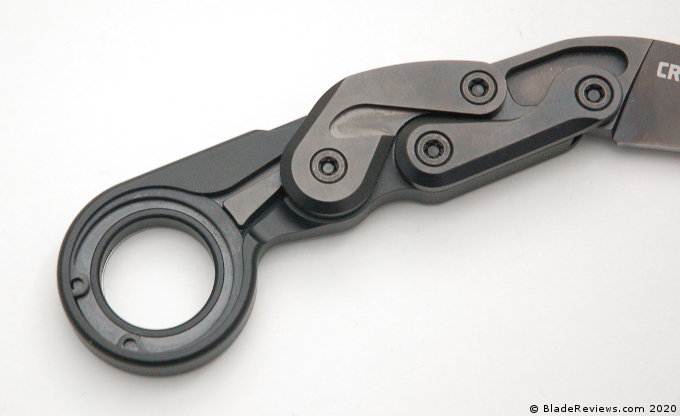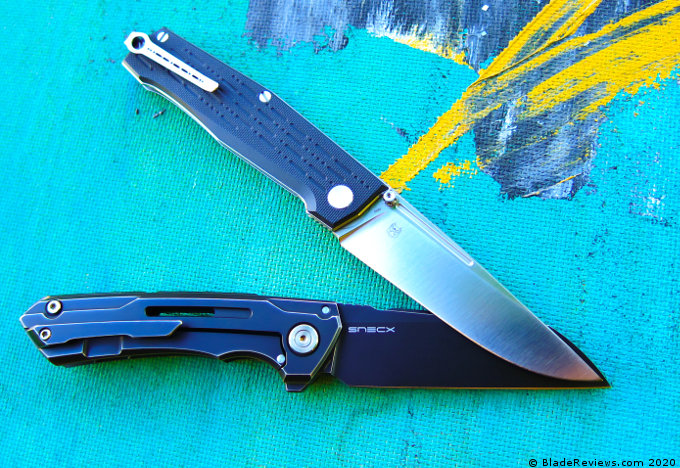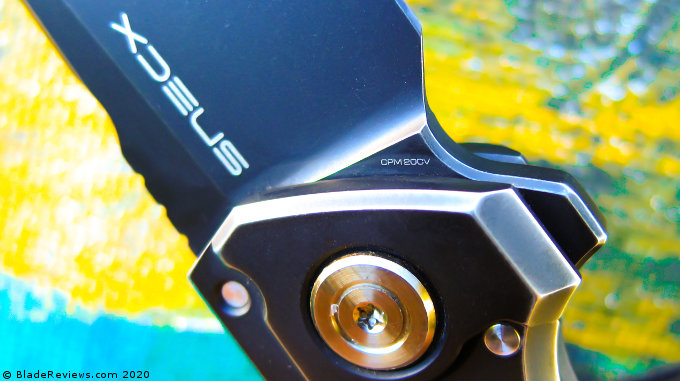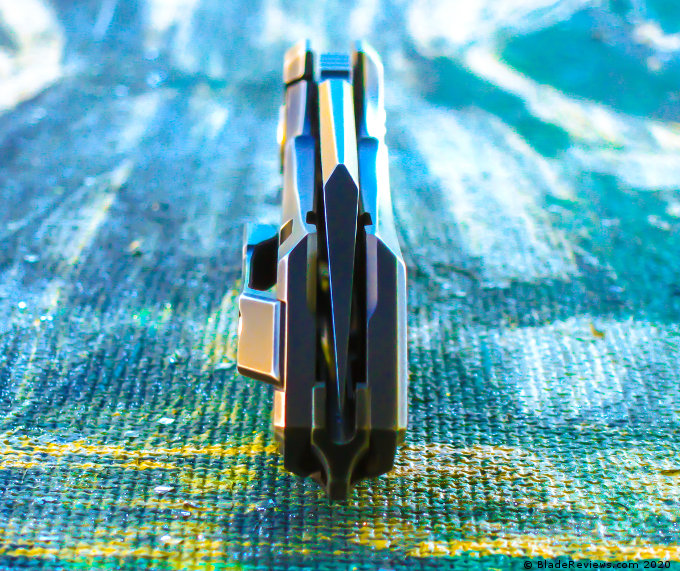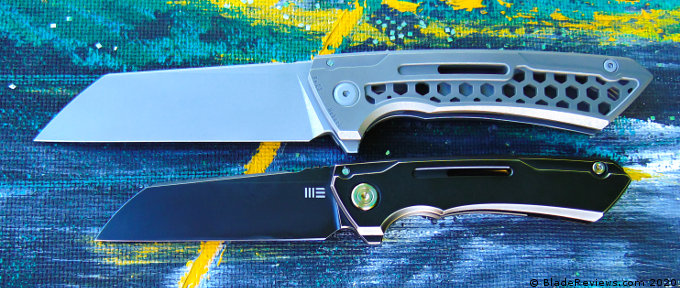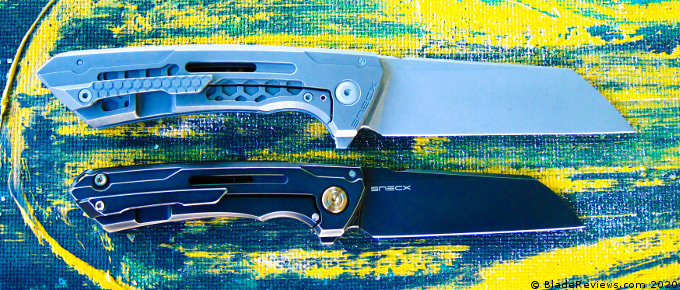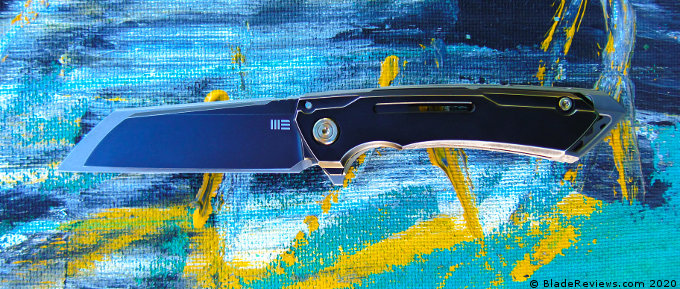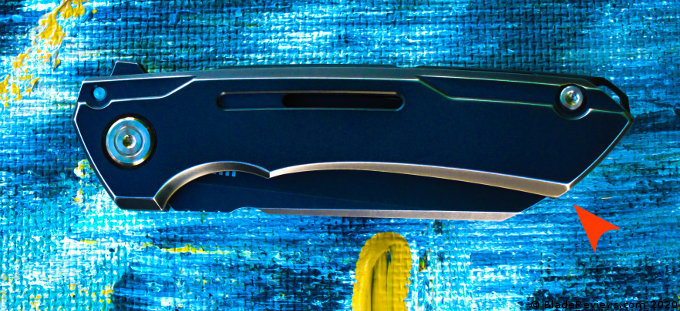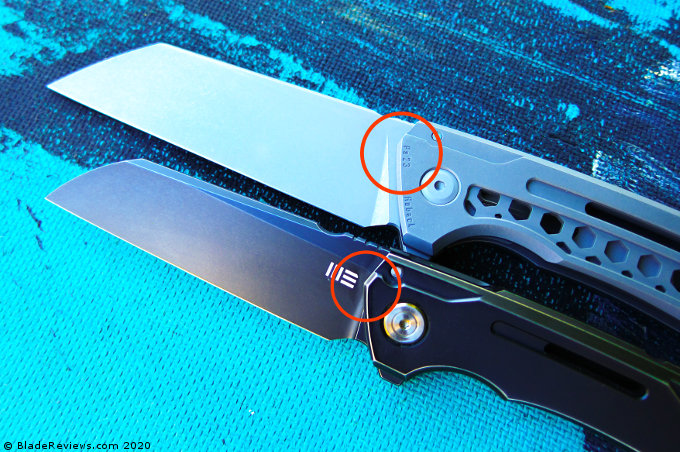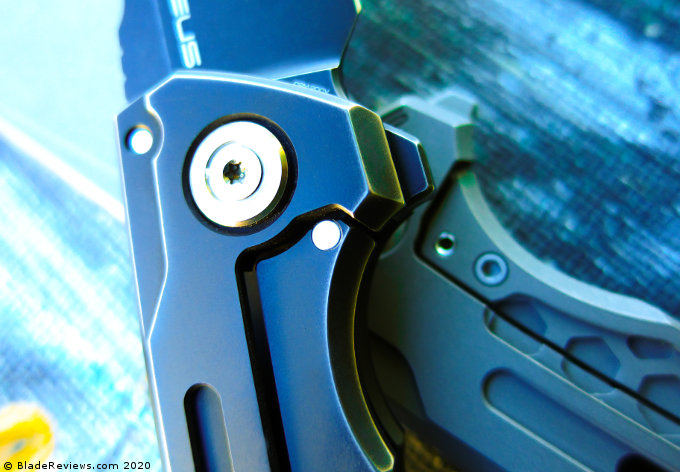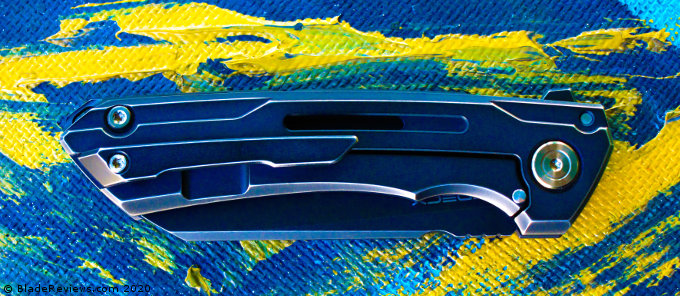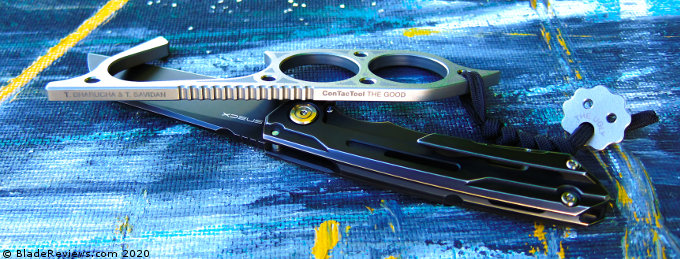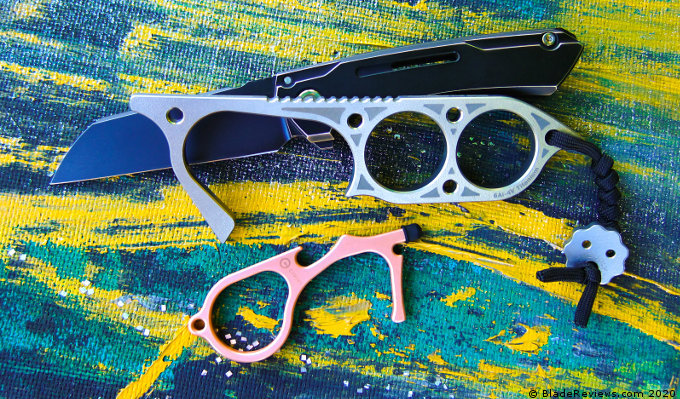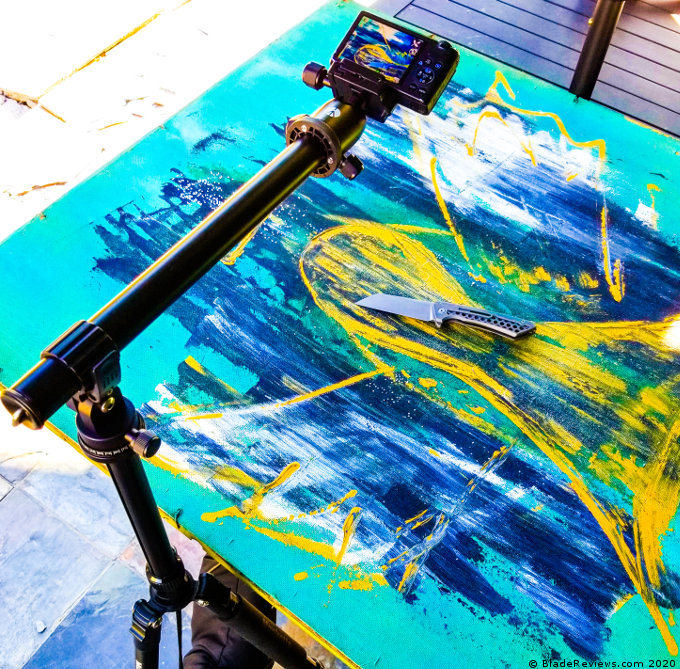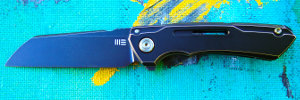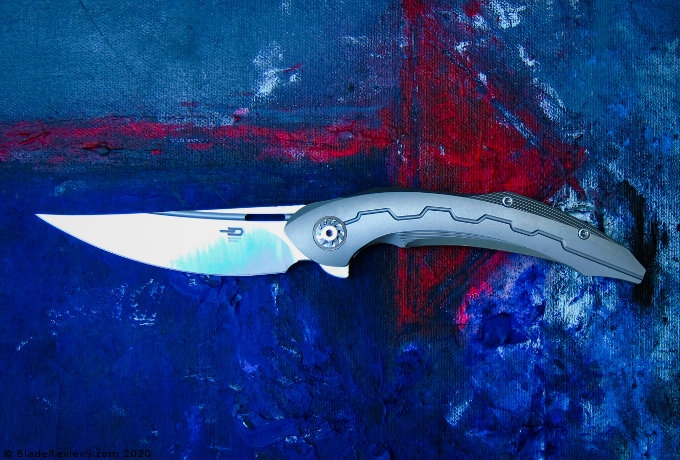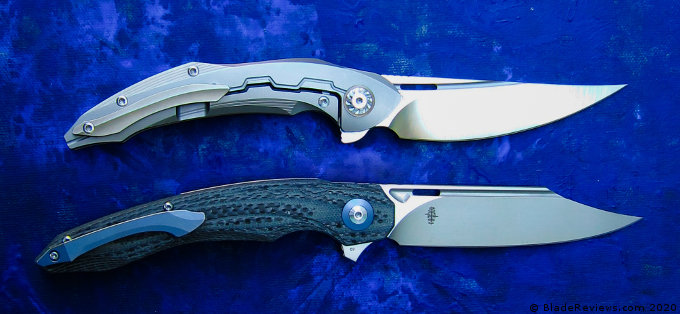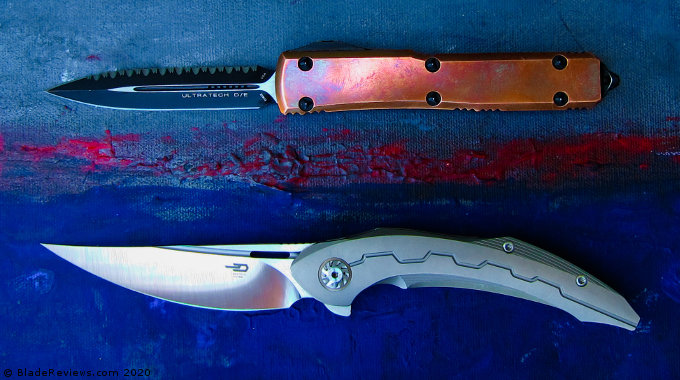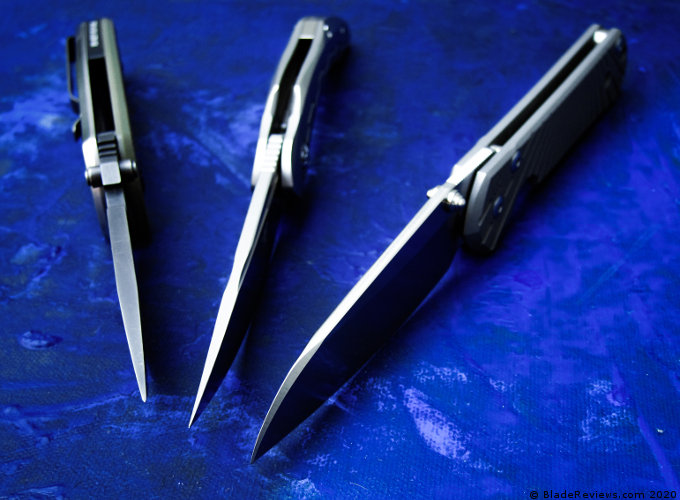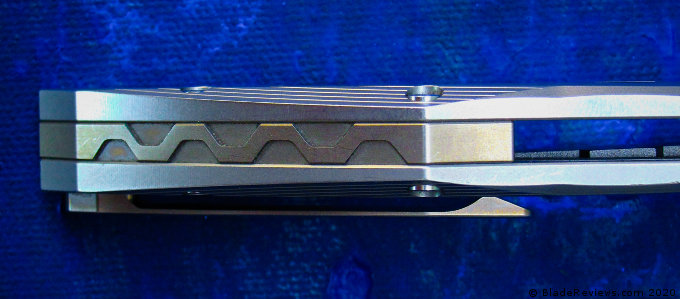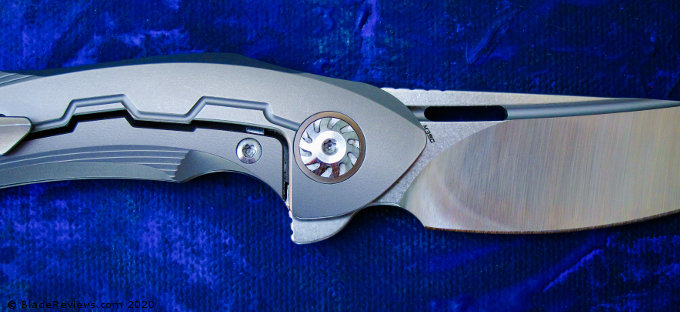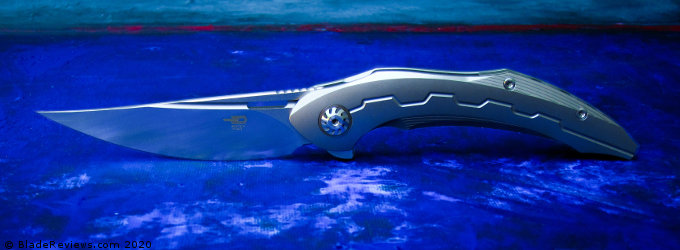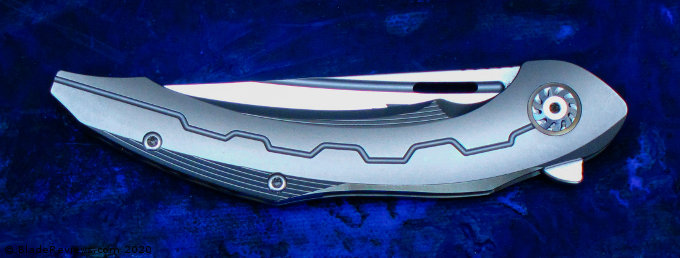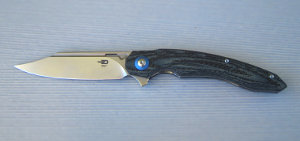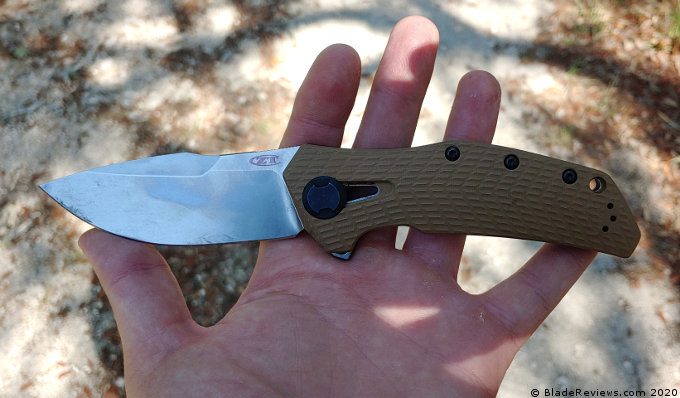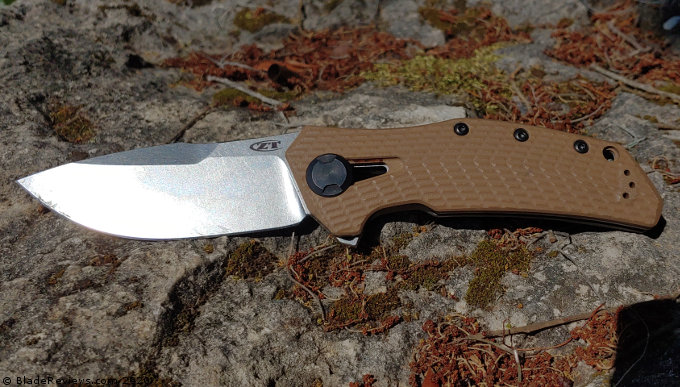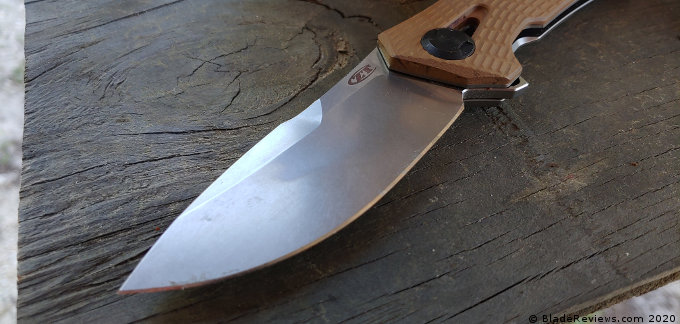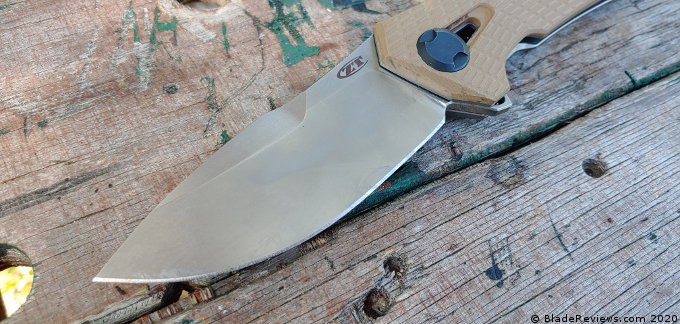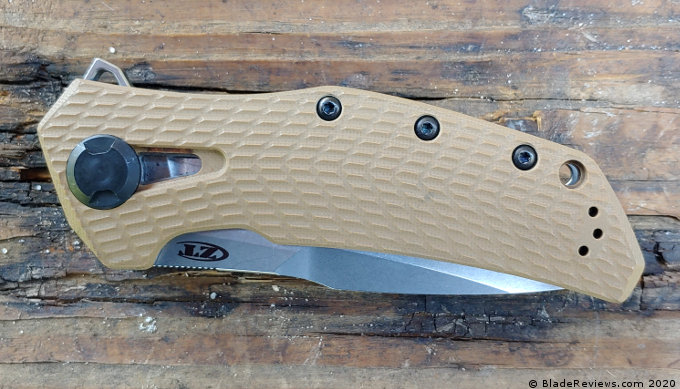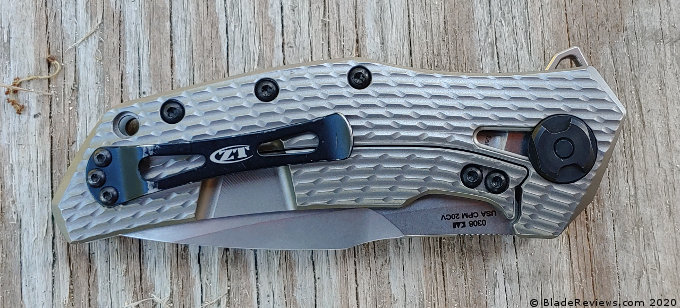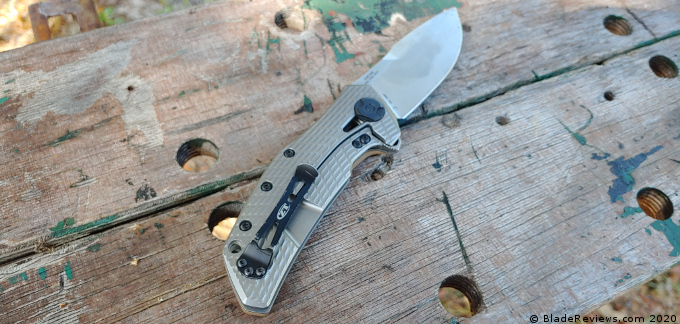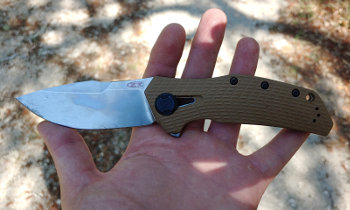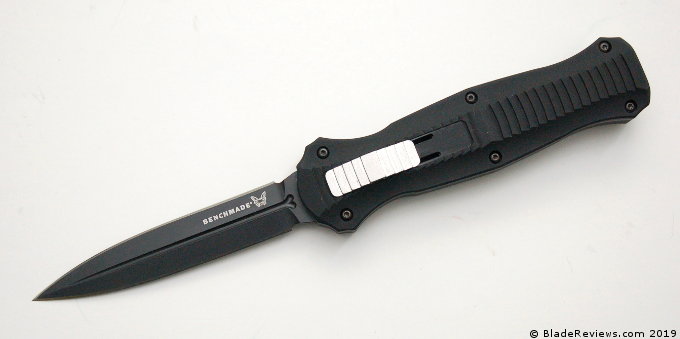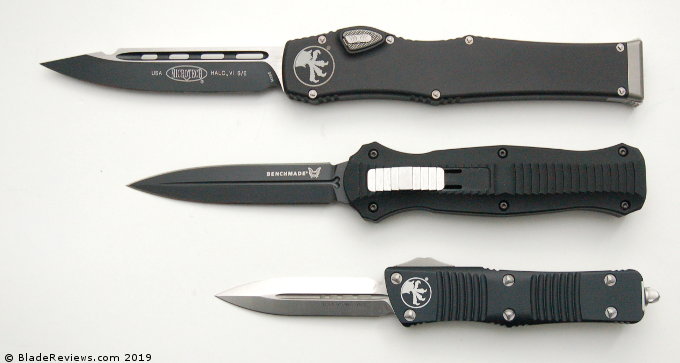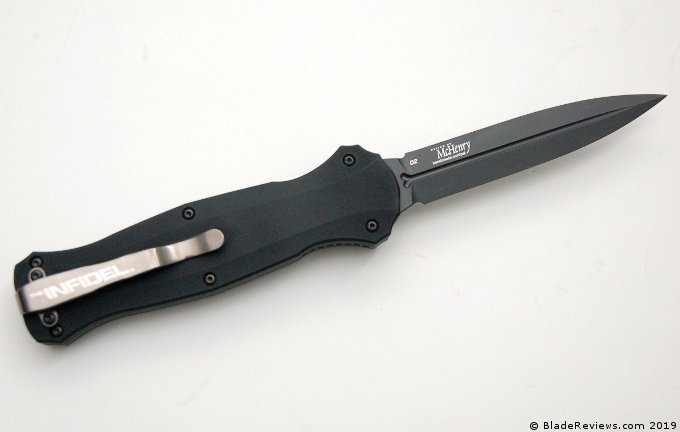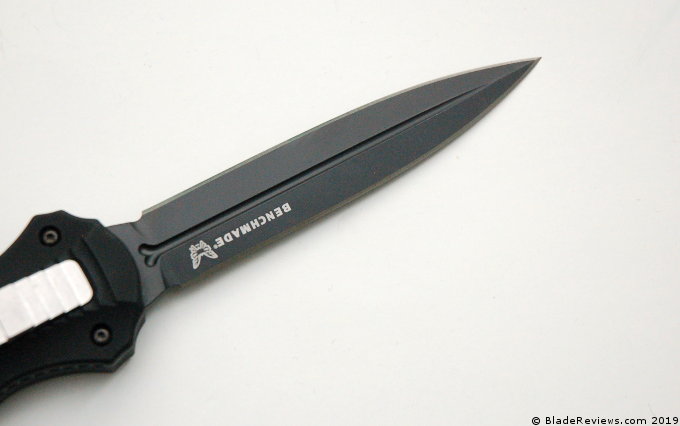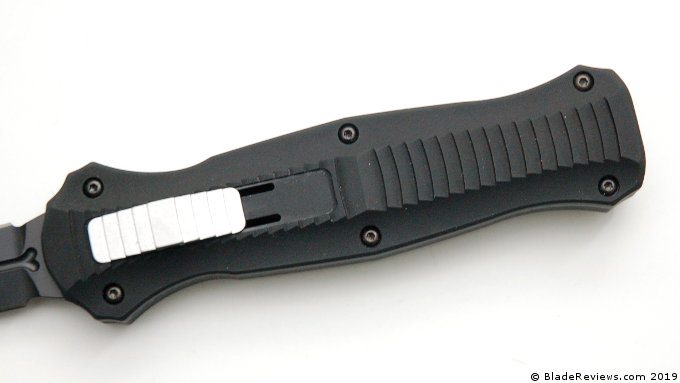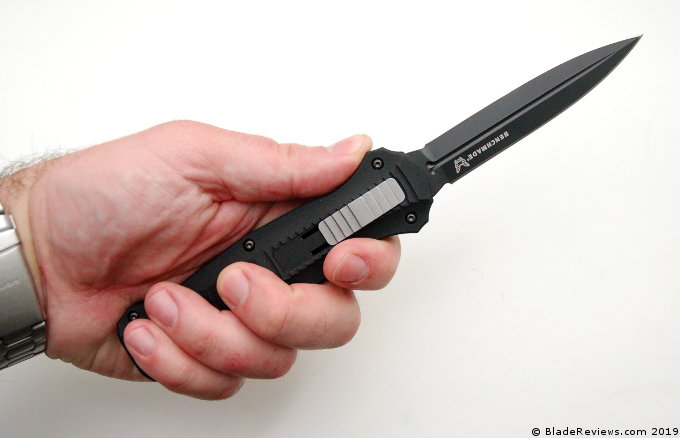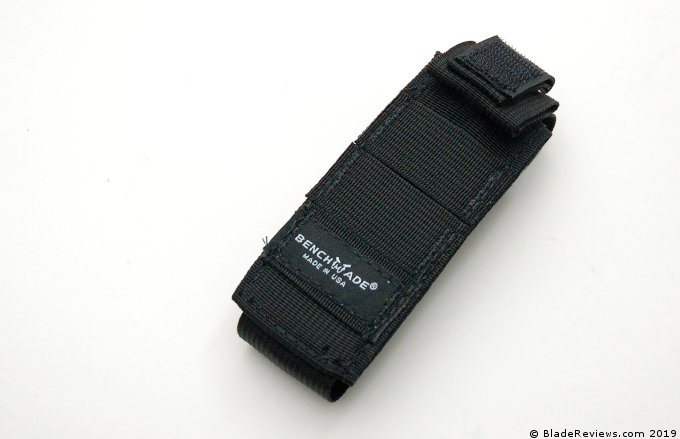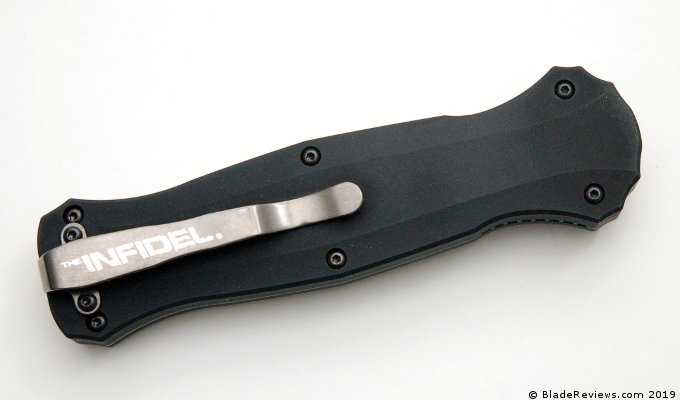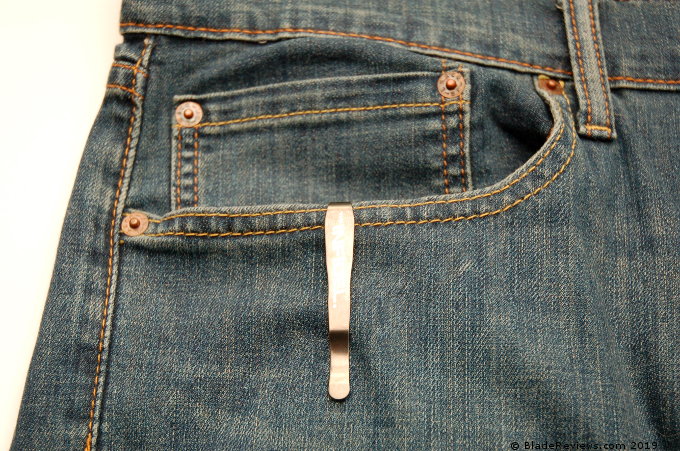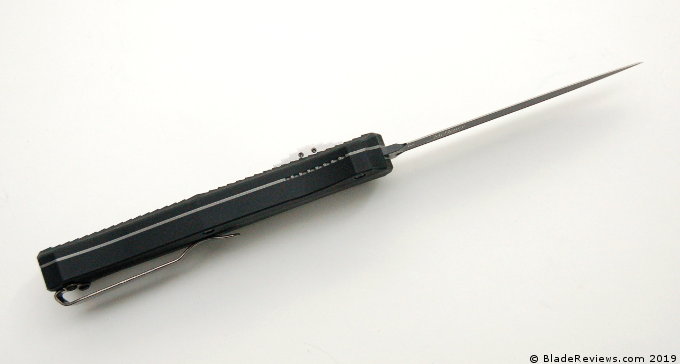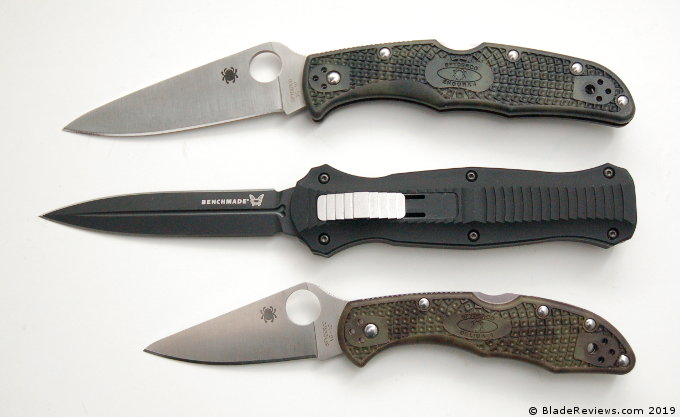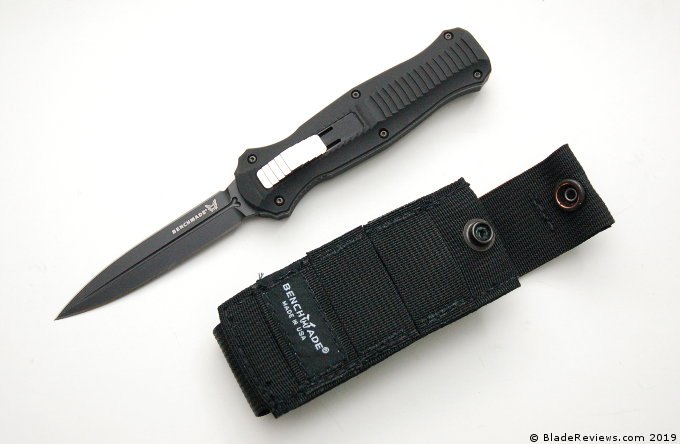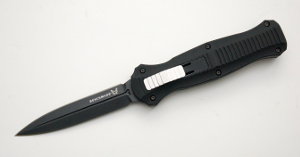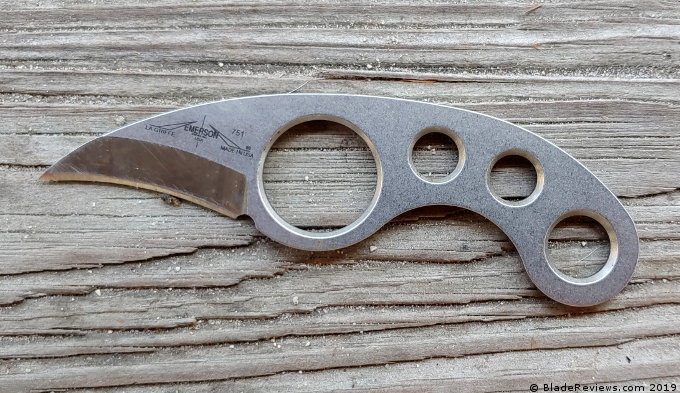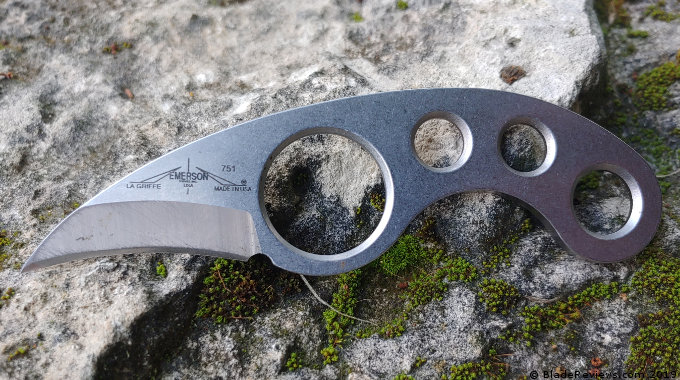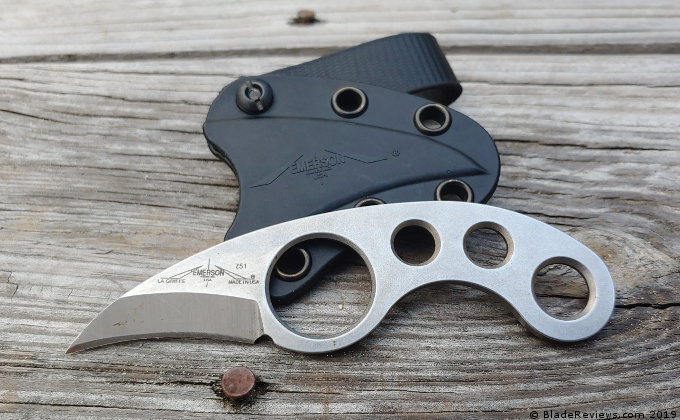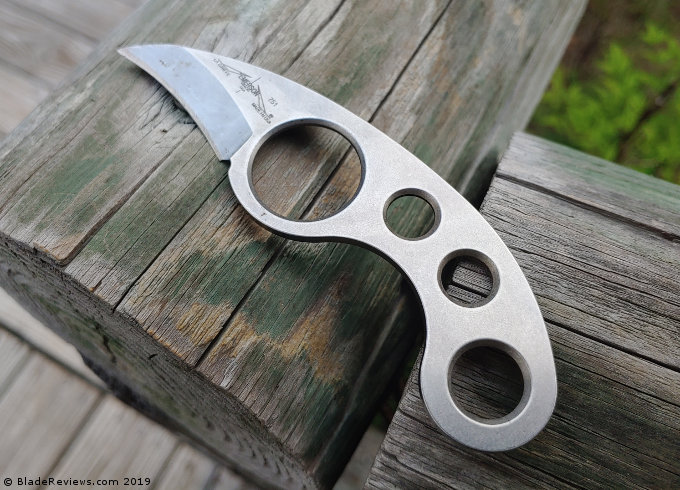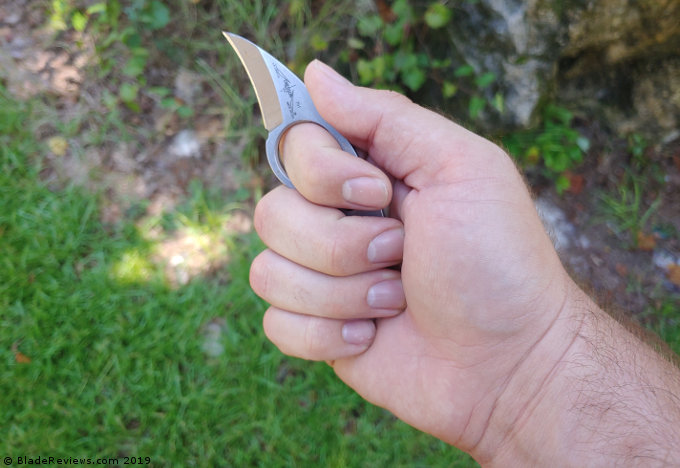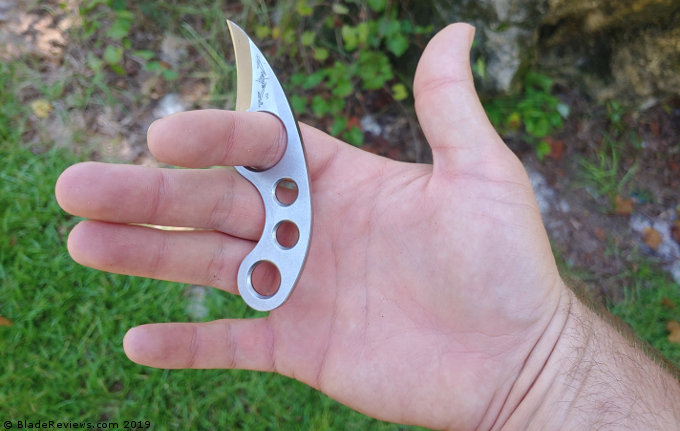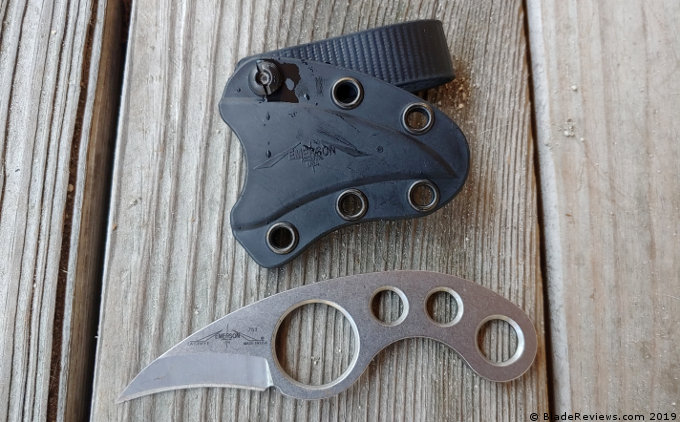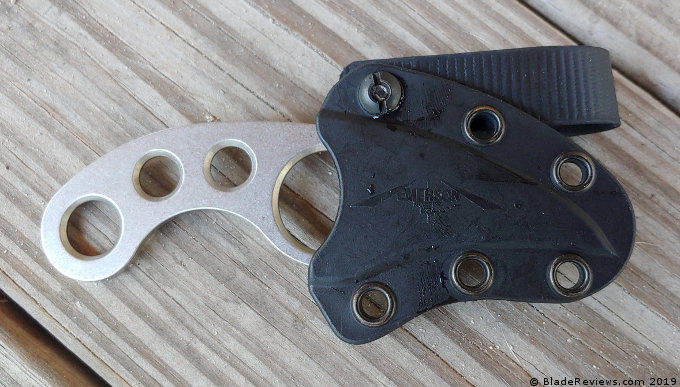Where to begin with the CRKT Provoke? This is a knife that defies convention, and it hardly relates to any other knife that has crossed my desk.
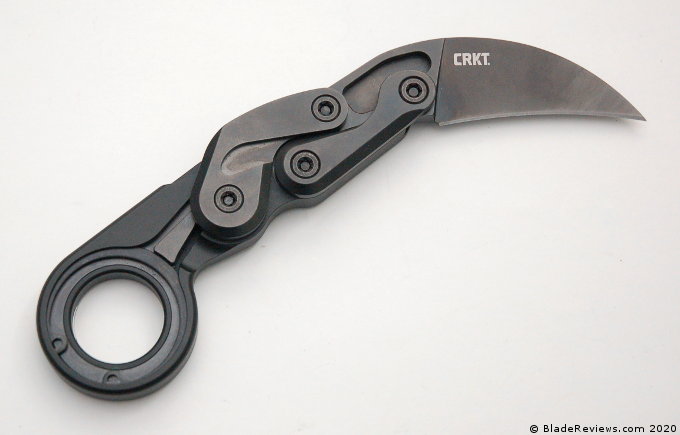
Buy the CRK Provoke at BladeHQ
No products found.
If I were to draw a comparison to a knife in my collection, the Provoke most reminds me of the HALO VI. Not so much from a nuts and bolts standpoint, but from the standpoint of how this knife makes you feel. It’s an entirely unreasonable pocket knife, and that’s why I’m drawn to it.
Of course all things have their origin, and the Provoke is no different. The Provoke is a production version of Joe Caswell’s Morphing Karambit. Joe is well known for his innovative and robust designs. His EDX is a good example of his over engineered design philosophy distilled into a more traditional folding knife pattern. The Morphing Karambit takes the idea to an entirely different level, linking the traditional Karambit pattern with a novel design that allows you to deploy the blade with the forward push of your finger.
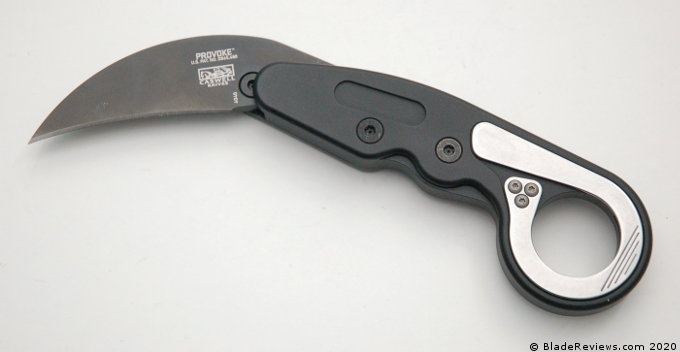
Like the HALO VI I can only describe it as a “serious piece of hardware”. It is satisfies in a way that something like a Spyderco Delica or Benchmade Griptilian could never dream of.
CRKT’s decision to work with Joe to bring this knife to the mass market was bold and admirable. But CRKT is known for its more budget oriented offerings, and the original Morphing Karambit retails for $650. CRKT’s version comes retails in the $200 range. Much more palatable, but not a cheap knife by any stretch of the imagination. Does it make the grade? I’ll attempt to answer that question as I explore this highly unique offering.
General Dimensions and Blade Details
The Provoke has an overall length of 7.37″, a 2.41″ blade, weighs 6.1 ounces, and is made in Taiwan. As I mentioned in the intro, this is a hefty piece of hardware. Few knives have the substance, the gravitas, of the Provoke. This is a heavy hitter. It is thic with 3 c’s, as the youths are saying. Purportedly saying, as I am no longer a youth. I am reminded of that as I watch the youths walk the window of my office as the shadows lengthen and the earth goes cold. Regardless, it’s a thick knife. 1.25 inches thick according to BladeHQ.
And at 6.1 ounces you feel it in the hand. It’s not an EDC. At least not for me. But not all knives should be a featherweight EDC. That would be boring. And the Provoke is definitely not boring. Here is a size comparison with a Delica and Endura:
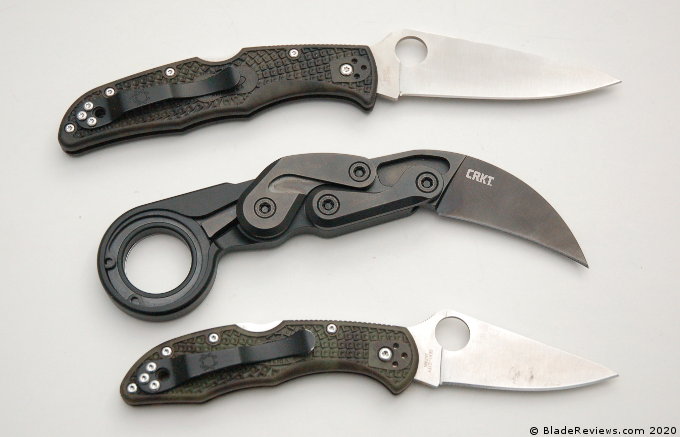
The blade is a chisel ground hawkbill shape. Hawkbills are common on karambits. Chisel grinds may be less common, but here we are working with over 5mm of D2 steel. It tapers out as you reach the tip, and it gives the knife a little symmetry. I will note that the actual edge is V ground. I think that was a good idea as in practice it helps this thick chisel ground blade track through material when cutting.
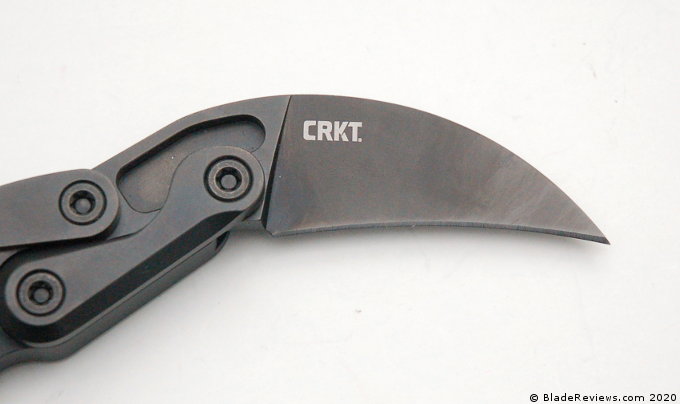
Speaking of cutting, I have had the chance to do a fair amount of work with this knife. The curve of the blade accelerates materials into the cut. It makes quick work of cardboard. From a utility standpoint, I think cardboard is where this knife excels. The thick blade makes it less effective for food prep. It can cut rope and fabric, and the fine tip works well for the modern equivalent of cutting coupons, but the curved handle and blade allow you to rake long cuts through cardboard. The entire knife has been given a titanium nitride coating, and so far it is held up well. I haven’t tested the knife in any martial capacity, but assume it would perform alright in the hands of a skilled martial artist.
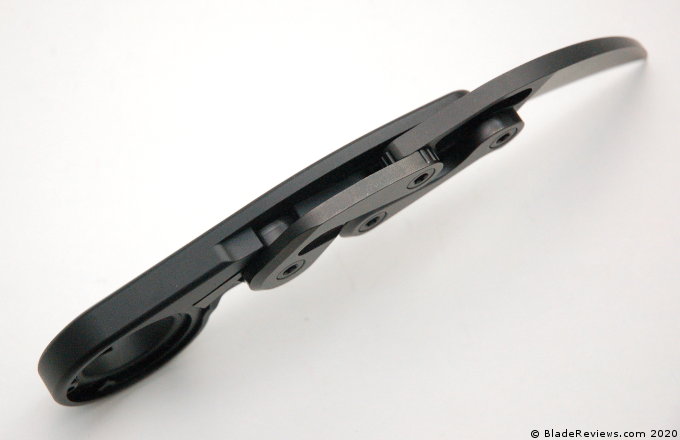
I think D2 was a decent choice for blade steel. It’s a tough semi-stainless steel. It’s less expensive but still gets the job done. Certainly there are better steels on the market, but I am not convinced a knife like this really “needs” to come in a super steel. Since the blade has been coated you don’t need to worry about rust, and in practice the heat treat on this is pretty good. It holds a nice, durable edge, and I am able to keep it touched up on my Sharpmaker, Golden Stone, or any other rod style sharpener.
Handle, Ergonomics, and Pocket Clip
The handle is made from 3 pieces of aluminum. You have the main part of the handle, and then 2 smaller aluminum links that connect the handle to the blade. All the pieces are bolted together and given the same black coating as the handle. In practice the handle construction is impressive. It’s solid and heavy. All the parts are nicely finished and everything lines up as it should. Excellent fit and finish on this piece.
For such an unconventional design, this Provoke feels surprisingly good in hand. I suppose this is due in part to the karambit design. Karambits provide plenty of room for your hand thanks to the short blade relative to the handle and the ring. I am able to stretch out and get a good grip. And although there are a few moving parts, none of them are sharp where your fingers go in both a forwards and reverse grip. So while it doesn’t look comfortable, it is. This is a testament to Joe Caswell’s remarkable design.
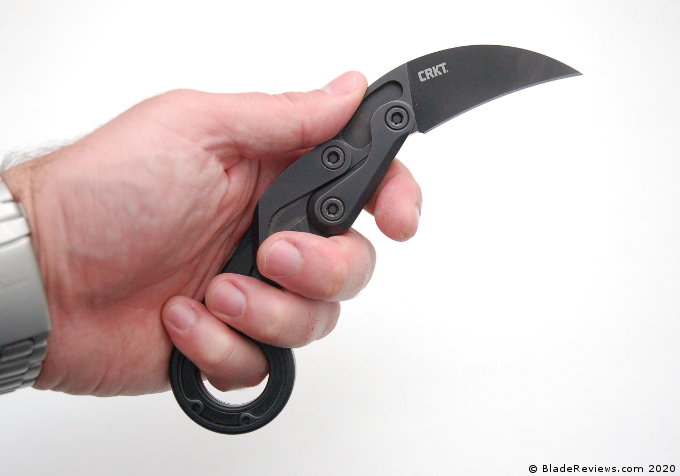
Let’s talk about the pocket clip. This is another highly unusual element of the knife. It is the only park that isn’t black, offering some contrast to the design. The clip curves all the way around the ring of the karambit and sits flush with the handle. You have to press the textured area on the pommel to push the pocket clip up and provide room to slide it into the pocket.
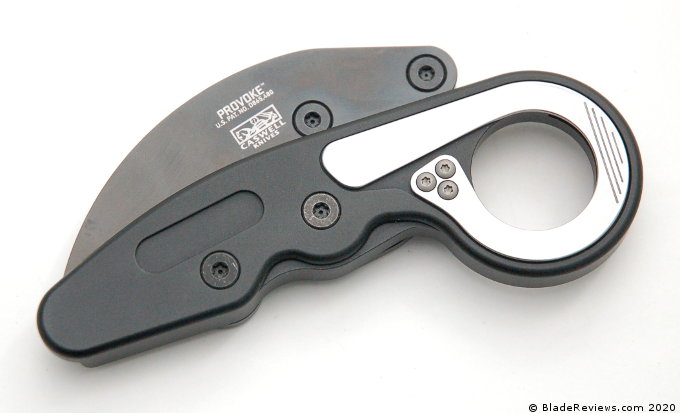
It’s an usual design but it works well, holding the Provoke securely in place, and providing you with a decently deep and discreet method of carry. Given the unusual shape of the clip it doesn’t really read like a pocket clip to me. Here’s your pocket shot:
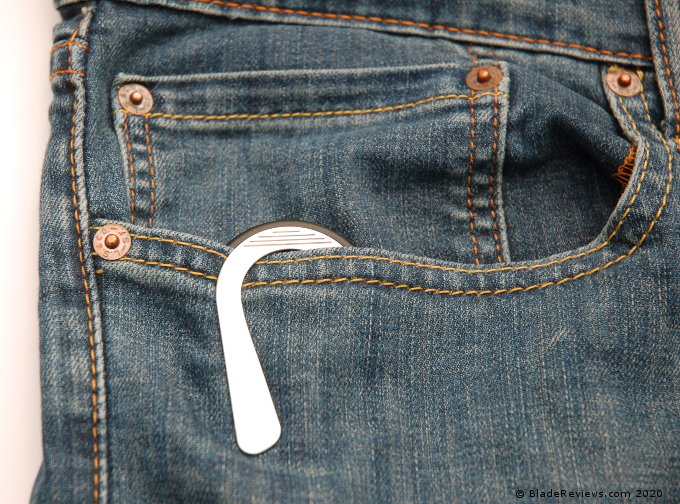
Of course at 6+ ounces, you will feel this knife if you decide to carry it daily. But for what it is, I think the Provoke carries well.
Deployment and Lockup
This is another point in the review where the Provoke colors outside the lines of conventional folding knife design. Rather than a thumb stud, or flipper tab, or blade hole, you nudge the blade open with your thumb. CRKT calls this their “Kinematic” system but it doesn’t really matter. If you are reading this review you likely are already aware of how the knife works. It’s difficult to describe so I’ll provide some pictures.
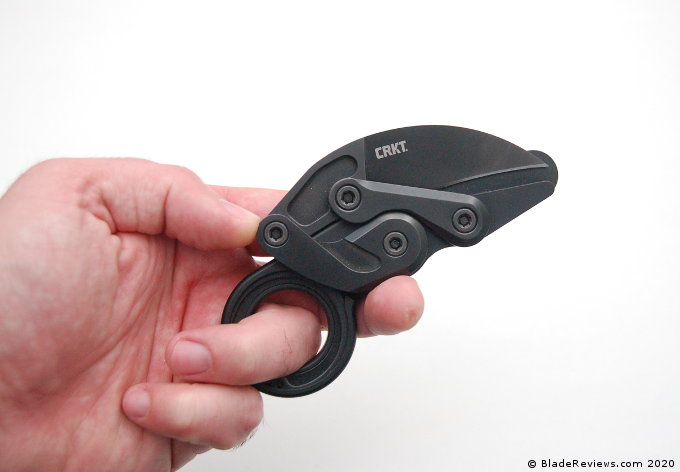
Knife junkies will need a cigarette after deploying this blade. There is a ballistic quality to this knife, and you don’t so much open the blade as you launch it. It’s a singularly satisfying experience let down only by the comparatively clunky method of unlocking the blade and bringing it back to closed position.
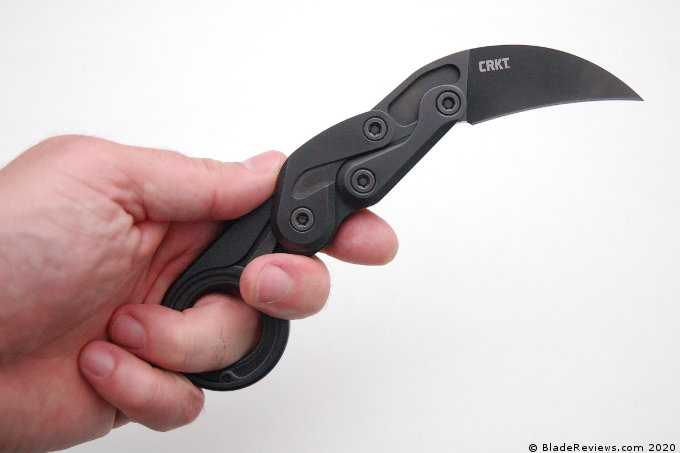
To unlock the blade you have to push a small tab near the ring. That frees the links to retreat to their closed position. It works well, but like most folders, it isn’t as fun as kicking the blade open.
I’ve been playing around with this knife for months. It lived at my office for a while, and I took it home to test it around the house and put the review together. I’ve opened and closed it hundreds if not thousands of times. It has worked flawlessly for me. Granted, I didn’t skin a hog with this knife, or take it out to the desert for a week, but I’ve used it and it has held up well.
Here is a parting size comparison with the Zero Tolerance 0350:

CRKT Provoke Review – Final Thoughts
I recall when Joe Caswell first introduced the Morphing Karambit as a Kickstarter Project. I was instantly intrigued, and know a lot of folks were. I believe our own Grayson Parker owns one of the Morphing Karambits and may eventually review it. It’s a design that is too unique to ignore. But at $450 it might be a little too expensive for most people to buy. I know the price was a hurdle for me personally.
So the idea of CRKT making a more approachable version of the knife appealed to me, and CRKT has a good track record of executing custom designs. At $200 CRKT’s version is still not cheap, but people are buying it. I see that it has over 500 reviews on Amazon, which is impressive for a niche product like this.
I don’t typically comment on Amazon reviews, but I found it interesting that some people on Amazon are disappointed with the Provoke stating “there are better options out there” for an EDC knife. No shit? This is a highly unusual design. It’s not going to replace a Delica or Griptilian. If you are buying this as your primary EDC knife be prepared to make many compromises. This should not be your first knife. It probably shouldn’t be your 10th if you are building a collection of users. It’s heavy and impractical as an EDC tool, but it’s an amazing design that has been well executed.
I think if you like the design you will like the knife. In my mind it’s more of a collectible or a design object than an every day carry piece, but it is 100% functional. CRKT did a great job bringing Caswell’s vision to the masses. I really dig the Provoke, and it will have a special place in my collection.
- Unique Innovation: Kinematic deploys the blade with push of the thumb
- Superior Performance: D2 blade steel for excellent edge retention
- Strong And Lightweight: Aluminum handle combines strength with minimal weight
- Unique Function: Flush mounted clip for secure carry
- Designed by Joe Caswell in Newbury Park, California
Editor: I recommend purchasing the CRKT Provoke at BladeHQ or Amazon Thank you very much.
